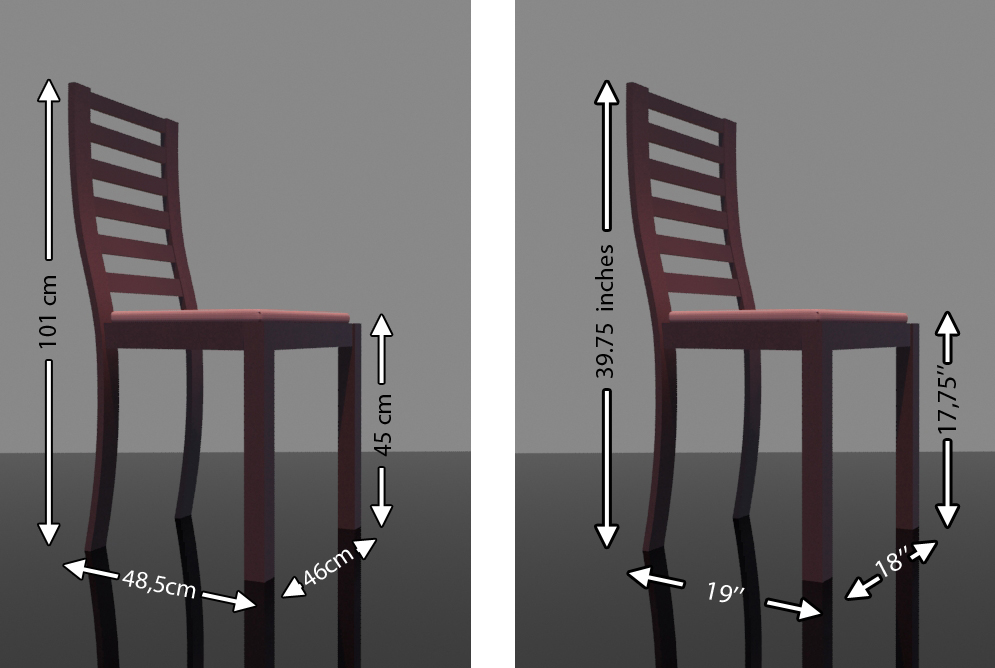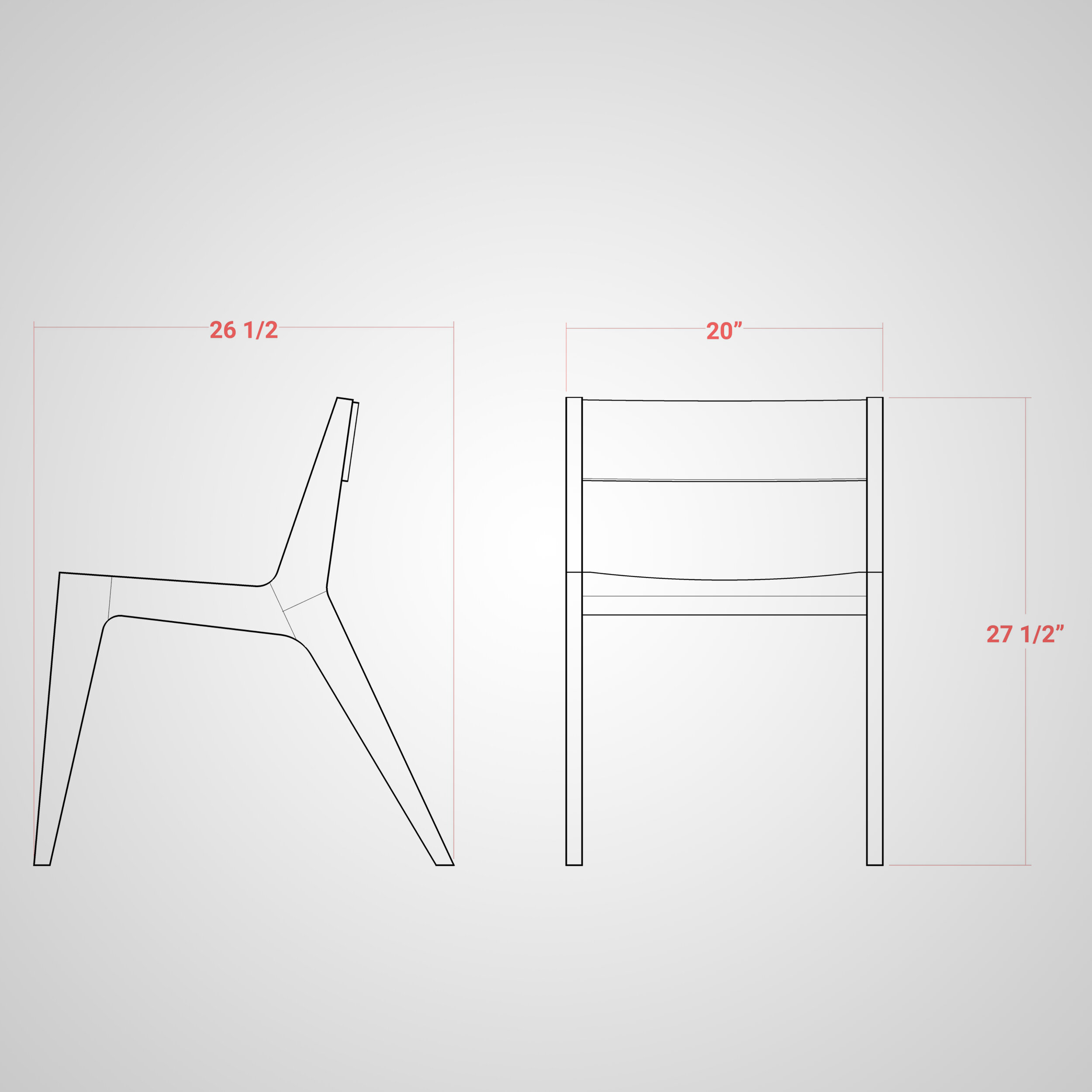Understanding Dining Chair Seat Dimensions

The dimensions of your dining chair seat play a crucial role in determining your comfort and the overall functionality of your dining area. Choosing the right seat dimensions can significantly impact your dining experience, ensuring you enjoy meals in a relaxed and ergonomic posture.
Seat Height, Dining chair seat dimensions
The height of the dining chair seat is directly related to the height of your dining table. An appropriate seat height allows you to comfortably sit at the table with your elbows slightly bent and your feet flat on the floor. A standard seat height for dining chairs is between 17-19 inches, but this can vary depending on the table height.
- Ergonomics and Comfort: When your chair seat is at the right height, it promotes good posture and reduces strain on your back and neck. You won’t be slouching or reaching for the table, allowing for a more relaxed and enjoyable dining experience.
- Table Height: The ideal table height is typically 28-30 inches, providing a comfortable gap between the seat and the tabletop. A rule of thumb is that the table should be approximately 10-12 inches higher than the chair seat.
- Variations in Height: There are variations in chair seat height depending on the style and intended use. For example, counter height chairs have a higher seat height, designed for dining at a counter or bar.
Seat Depth
The depth of the dining chair seat refers to the distance from the front to the back of the seat. A comfortable seat depth allows you to sit back comfortably with adequate support for your thighs and back.
- Typical Range: The typical range for dining chair seat depths is 16-18 inches. This depth provides enough space for most adults to sit comfortably without feeling cramped.
- Legroom and Comfort: A seat that is too deep can lead to discomfort as your legs may be forced to bend at an awkward angle. On the other hand, a seat that is too shallow may leave you feeling unsupported and unstable. A good seat depth allows for adequate legroom while still providing support for your back and thighs.
Seat Width
The width of the dining chair seat determines how much space you have to spread your legs and sit comfortably.
- Typical Range: The typical width for dining chair seats is 18-20 inches. This provides ample space for most adults to sit comfortably.
- Posture and Comfort: A seat that is too narrow can feel cramped and uncomfortable, especially for larger individuals. On the other hand, a seat that is too wide may make it difficult to get in and out of the chair. The right width allows you to sit comfortably with enough space for your legs and hips, promoting good posture.
Factors Influencing Dining Chair Seat Dimensions

The dimensions of a dining chair seat are crucial for comfort and functionality, and they are influenced by a variety of factors. Understanding these factors can help you choose chairs that are the perfect fit for your dining space and your needs.
Chair Style
The style of a dining chair significantly impacts its seat dimensions. Traditional chairs often feature larger seats with more generous curves for added comfort. Modern chairs, on the other hand, tend to have slimmer, more angular seats that prioritize a minimalist aesthetic. Contemporary chairs may offer a blend of both styles, incorporating modern design elements with comfortable seating.
- Traditional chairs: These chairs are often characterized by their ornate designs, tufted upholstery, and generous proportions. They typically have wider seats and higher backs, providing ample support and comfort.
- Modern chairs: Modern chairs are known for their clean lines, sleek silhouettes, and minimalist designs. They often feature smaller seats with lower backs, emphasizing functionality and a streamlined look.
- Contemporary chairs: Contemporary chairs combine elements of both traditional and modern styles. They may have clean lines and simple shapes but with a focus on comfort and ergonomics. They often feature slightly larger seats than modern chairs, offering a balance between style and functionality.
Intended Use
The intended use of a dining chair also plays a significant role in determining its dimensions. Casual dining chairs are designed for everyday use and prioritize comfort over formality. They typically have wider seats and lower backs for relaxed seating. Formal dining chairs, on the other hand, are designed for special occasions and often feature more elegant designs with smaller seats and higher backs.
- Casual dining chairs: These chairs are ideal for everyday use and gatherings. They are typically designed for comfort and ease of use, often featuring wider seats, lower backs, and softer upholstery.
- Formal dining chairs: Formal dining chairs are designed for special occasions and formal settings. They often feature more elegant designs, smaller seats, and higher backs, emphasizing sophistication and style.
Target Audience
The target audience for a dining chair is another important consideration when determining its dimensions. Adult chairs are designed for the average adult height and weight, with larger seats and higher backs to provide ample support and comfort. Children’s chairs, on the other hand, are smaller and lower to accommodate their smaller frames.
- Adult chairs: Adult chairs are designed to accommodate the average adult height and weight. They typically have larger seats, higher backs, and wider armrests for optimal comfort and support.
- Children’s chairs: Children’s chairs are designed specifically for children, with smaller seats, lower backs, and shorter heights to ensure proper fit and safety.
Designing Dining Chair Seat Dimensions

Designing dining chair seat dimensions is crucial for achieving optimal comfort and functionality. Proper dimensions ensure that chairs are comfortable to sit in for extended periods, allowing for proper posture and ease of movement. They also need to fit seamlessly within the dining space, accommodating the table and allowing for ample legroom.
Recommended Dining Chair Seat Dimensions
The following table Artikels recommended dining chair seat dimensions for various scenarios:
| Scenario | Seat Height (inches) | Seat Depth (inches) | Seat Width (inches) |
|---|---|---|---|
| Standard Dining | 17-19 | 16-18 | 18-20 |
| Bar Seating | 28-30 | 16-18 | 18-20 |
| Children’s Chairs | 14-16 | 14-16 | 16-18 |
Visual Representation of Ideal Dining Chair Seat Dimensions
A visual representation of ideal dining chair seat dimensions would showcase the relationship between seat size and user comfort. For instance, a diagram could depict a person seated in a chair with their feet comfortably resting on the floor, their thighs parallel to the floor, and their back supported by the chair’s backrest. This visual would illustrate how the seat height, depth, and width contribute to a comfortable and ergonomic sitting experience.
Measuring Existing Dining Chairs
To measure existing dining chairs and determine their dimensions, follow these steps:
1. Seat Height: Measure from the floor to the top of the seat cushion.
2. Seat Depth: Measure from the front edge of the seat cushion to the back of the seat cushion.
3. Seat Width: Measure the width of the seat cushion at its widest point.
By comparing these measurements to the standard recommendations, you can determine whether the existing chairs are appropriately sized for their intended use.
Dining chair seat dimensions are crucial for ensuring comfort and functionality. A standard seat depth of 16-18 inches allows for adequate legroom, while a seat height of 18-20 inches promotes proper posture. The Riley Upholstered Dining Chair offers a comfortable seat height of 19 inches, making it an ideal choice for those seeking ergonomic design.
When considering dining chair dimensions, it is important to factor in individual preferences and table height for optimal dining experiences.
When choosing dining chairs for a table, understanding the seat dimensions is crucial for comfort and functionality. For a 6 chair round dining set , the ideal seat depth should allow for adequate legroom and a comfortable posture, while the seat width should be sufficient to accommodate the average person.
The right seat height ensures ease of access and prevents strain on the back.
